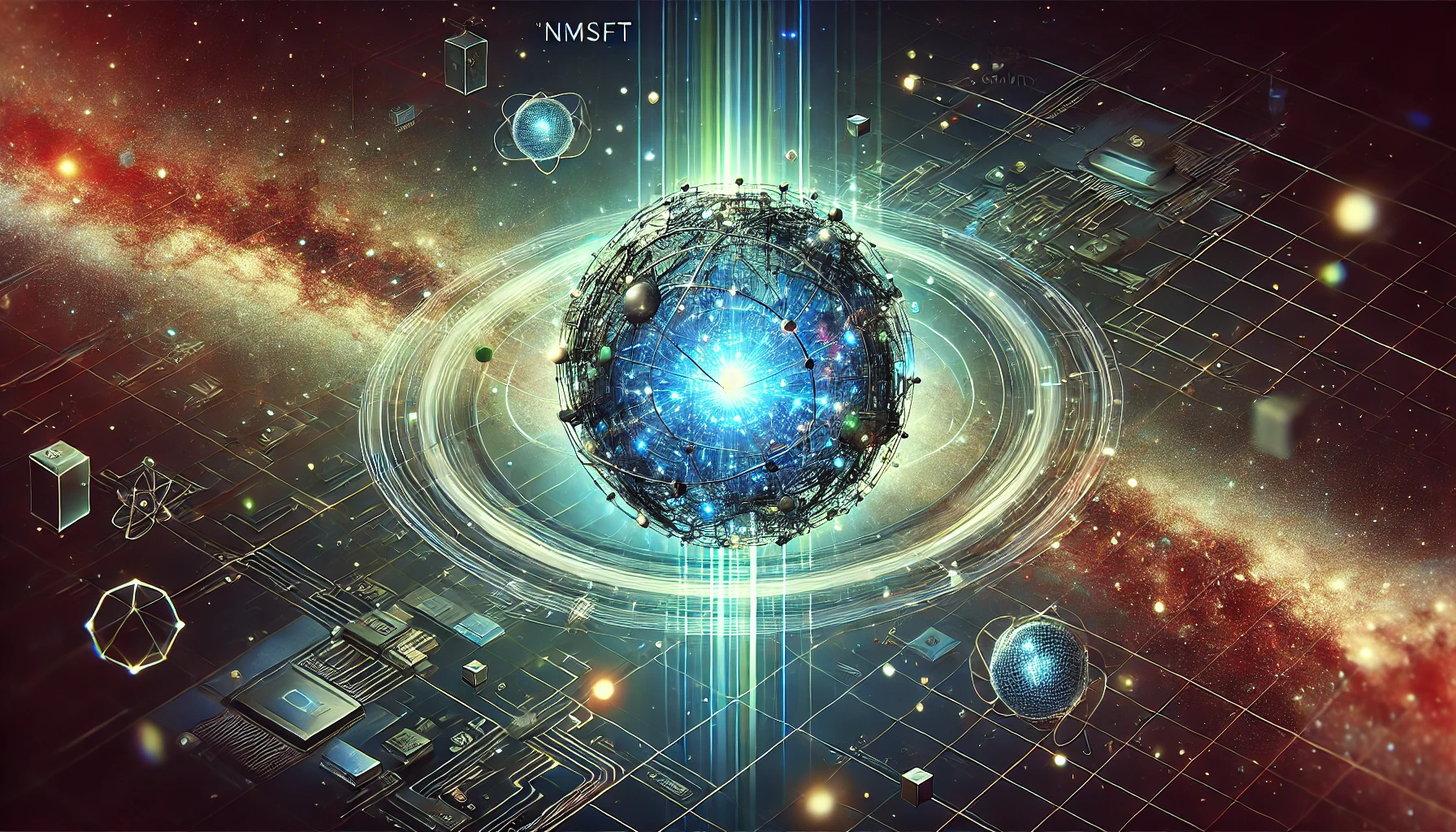The Hidden Force of “NMSFT Gravity”: How It Shapes Our World

Introduction
In a world filled with ever-evolving concepts, “NMSFT Gravity” stands out as a groundbreaking idea that has intrigued scientists, technologists, and futurists alike. This concept represents a unique intersection of science, technology, and philosophy, offering a new lens through which we can understand the forces shaping our reality.
But what exactly is “NMSFT Gravity”? Why is it significant, and how does it differ from conventional notions of gravity? This article delves deep into the core principles of NMSFT Gravity, exploring its scientific underpinnings, practical applications, and the challenges it faces. By the end, you’ll gain a comprehensive understanding of why this idea is generating buzz across disciplines and why it may redefine how we interact with the world around us.
Understanding the Fundamentals of NMSFT Gravity
“NMSFT Gravity” is not gravity as we know it in the classical or relativistic sense. Unlike Newtonian gravity, which governs the physical attraction between masses, or Einstein’s general relativity, which describes gravity as the warping of spacetime, NMSFT Gravity is a metaphorical force. It represents the pull of innovation, influence, and interconnectedness in the digital and technological era.
The term “NMSFT” is often interpreted as an acronym or a shorthand for a broader concept rooted in technological networks and systemic influence. Much like how physical gravity binds planets and galaxies, NMSFT Gravity describes how powerful ideas, innovations, or entities create a force field that draws others toward them. This could range from tech ecosystems, like those fostered by Microsoft (an inspiration for the term), to the societal adoption of emerging technologies.
Historically, the concept of systemic gravity is not new. Scholars have long studied how dominant players in any system—whether economic, social, or technological—exert influence. However, what sets NMSFT Gravity apart is its focus on digital ecosystems, cloud computing, and the “gravitational pull” of technological platforms that shape human behavior, industry trends, and societal structures.
Scientific Implications of NMSFT Gravity

NMSFT Gravity may not belong to traditional scientific frameworks, but its implications are profound. At its core, the concept relies on interdisciplinary connections, pulling from fields such as network science, systems theory, and digital innovation. Understanding how technological ecosystems evolve is key to grasping the mechanics of NMSFT Gravity.
For instance, large technology companies like Microsoft, Google, and Amazon exemplify how NMSFT Gravity works in practice. These corporations create platforms—whether cloud infrastructures, operating systems, or AI tools—that act as hubs. Smaller entities and individuals naturally gravitate toward these hubs due to the ecosystem’s resources, scalability, and reach. This phenomenon mirrors the way smaller celestial bodies orbit around massive ones due to gravitational forces.
The theoretical underpinning of NMSFT Gravity also emphasizes feedback loops. As more participants join a platform, its value increases, thereby attracting even more participants—a concept often referred to as the “network effect.” This self-reinforcing cycle is why the pull of NMSFT Gravity grows stronger over time, creating dominant players in digital and technological spheres.
Moreover, NMSFT Gravity prompts us to question traditional scientific paradigms. It forces a re-evaluation of how we measure influence and success in a hyper-connected world. Metrics such as adoption rates, user engagement, and system dependency emerge as critical variables in understanding this metaphorical gravity.
Practical Applications of NMSFT Gravity
The practical applications of NMSFT Gravity are vast and transformative, spanning industries and disciplines. One of its most visible manifestations is in cloud computing. Major platforms like Microsoft Azure and AWS (Amazon Web Services) illustrate how digital infrastructure becomes a gravitational center, drawing businesses, developers, and innovators into its ecosystem. These platforms simplify scalability, storage, and data processing, making them indispensable in today’s tech-driven landscape.
Beyond cloud computing, NMSFT Gravity also influences software adoption. Consider how the ubiquity of Microsoft Office tools or Google’s suite of applications has become so ingrained in professional and personal lives that they’ve essentially become standards. The pull of these tools is so strong that alternatives struggle to gain traction, even when they offer comparable features.
The concept also has implications for artificial intelligence (AI). As companies like OpenAI and Microsoft develop increasingly sophisticated AI models, these tools become the cornerstone of AI-driven applications. Developers and businesses are drawn to these platforms because they provide advanced capabilities and extensive support—a clear demonstration of NMSFT Gravity in action.
Looking to the future, the pull of NMSFT Gravity could extend into realms like quantum computing, autonomous systems, and biotechnology. As these fields mature, dominant players will likely emerge, creating ecosystems that others will gravitate toward. Understanding this phenomenon is essential for strategizing innovation and collaboration in a rapidly evolving world.
Challenges and Controversies Surrounding NMSFT Gravity
Despite its transformative potential, NMSFT Gravity is not without challenges and controversies. One major criticism comes from skeptics who argue that the concept is more of a buzzword than a scientifically grounded theory. They point out that while the metaphor is useful, it lacks the rigorous empirical evidence required to be a true scientific framework.
Ethical implications also loom large. The centralization of power and influence within a few dominant platforms raises concerns about monopolies, data privacy, and systemic inequities. When one entity becomes the gravitational center, it risks creating dependencies that can stifle competition and innovation. For example, smaller companies may struggle to compete with tech giants whose ecosystems dominate the market.
There are also societal concerns. The reliance on a few technological hubs can make systems vulnerable to failure or exploitation. For instance, if a major cloud platform suffers an outage or a breach, the ripple effects could be catastrophic for businesses and users worldwide.
Finally, NMSFT Gravity raises philosophical questions about free will and autonomy. Are we truly making independent choices, or are we being inexorably drawn toward the gravitational centers of influence? This question underscores the need for greater awareness and critical thinking as we navigate the forces shaping our digital age.
Conclusion
“NMSFT Gravity” is a compelling concept that encapsulates the transformative pull of technological ecosystems and innovations. By understanding its principles, implications, and challenges, we gain a new perspective on the forces shaping our interconnected world. Whether through cloud computing, AI, or emerging technologies, NMSFT Gravity reveals the systemic dynamics that influence how we live, work, and innovate.
As we continue to explore this idea, it’s crucial to balance the benefits of interconnectedness with the risks of centralization and dependency. By doing so, we can harness the power of NMSFT Gravity while ensuring a fair, equitable, and resilient digital future.
FAQs
What exactly is “NMSFT Gravity”? NMSFT Gravity is a metaphorical concept describing the influence and pull of dominant technological ecosystems in shaping human behavior, industry trends, and societal structures.
Is “NMSFT Gravity” a proven scientific phenomenon? No, it’s not a scientifically proven force but rather a metaphorical framework used to describe systemic influence in technology and innovation.
How does “NMSFT Gravity” impact modern technology? It explains how dominant platforms like Microsoft Azure, AWS, or Google attract users and developers, creating self-reinforcing ecosystems.
What are the ethical concerns surrounding “NMSFT Gravity”? Concerns include monopolization, data privacy issues, and the centralization of power within a few dominant platforms.
Can smaller players resist the pull of “NMSFT Gravity”? Yes, by focusing on niche markets, innovation, and unique value propositions, smaller entities can carve out space despite the dominance of larger ecosystems.
Where can I learn more about this concept? Research articles, industry reports, and thought leadership from prominent technology companies are great starting points for exploring NMSFT Gravity further.



